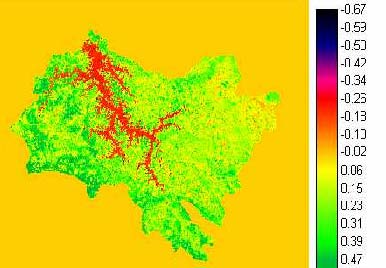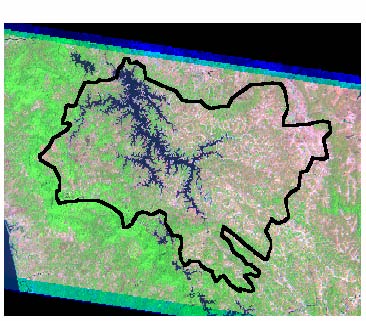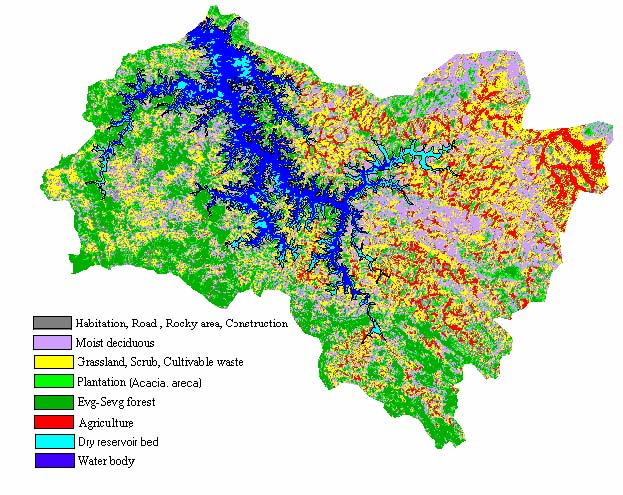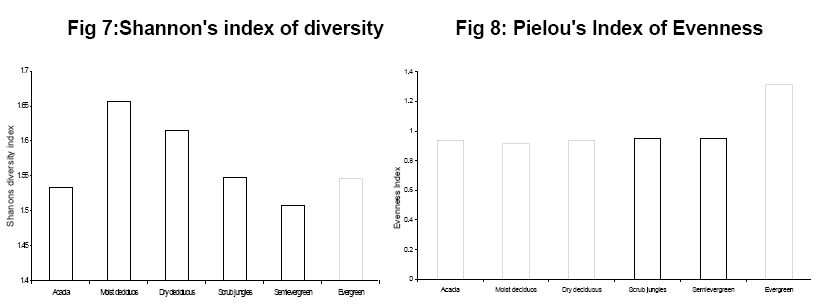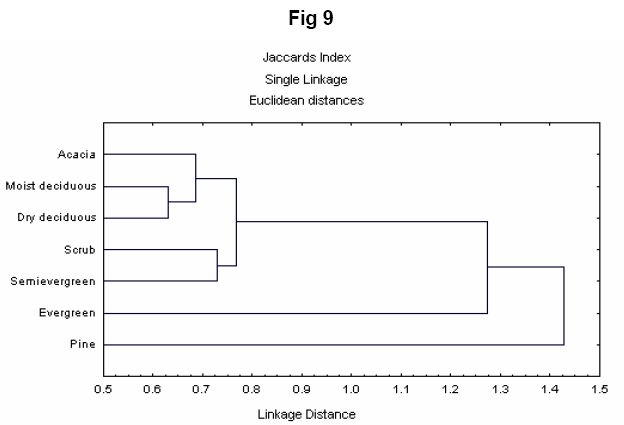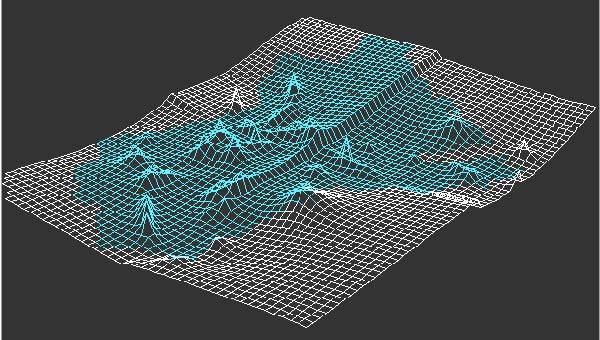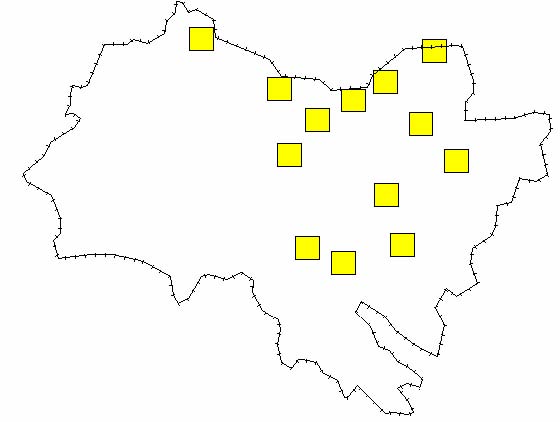 |
ANTS HABITAT MAPPING USING REMOTE SENSING AND GIS
Ramachandra T. V. and Ajay N. |
 |
Results and Discussions Land use - land cover mapping: Computation of NDVI index (Fig 4) resulted in identifying 70% of the land to be under vegetation cover. NDVI also revealed dense canopy covers in the western region of the study area, while large agricultural fields were present towards the eastern region. A composite image was (Fig 5) analyzed to identify sites for training data collection. A supervised classification of the region resulted in identifying semievergreen to evergreen and moist deciduous forests to be very prominent in the entire study area (Fig 6). This region represents a mosaic of forest types with semievergreen to evergreen forests, deciduous forests, agricultural fields, built up regions, scrub lands and wastelands. Fig 4: Normalized Difference vegetation Index Fig 5: Composite image Fig 6: Supervised classification of the Linganamakki catchment of Sharavathi river basin. Ant diversity: A total of 84 species representing 31 genera and 5 subfamilies were collected from the study area, with an average of 9 (± 3) species per quadrat. Species richness varied from a least of 7% of the total in pine plantations to a maximum of 76% in moist deciduous forests. Sampling revealed moist deciduous forest to harbour the most diverse ant species (Fig 6) while evergreen forests had the highest species density. Scrub jungles recorded a higher species density than acacia plantations, despite having a similar species percentage (51%). Ant species were more evenly distributed in evergreen forests (Fig 7, Fig 8) than the lesser but uniform evenness exhibited in other habitats. Acacia plantations though had moderate levels of diversity, not many specialized species were present in this habitat. Most of the species belonged to generalized category of ants along with certain known tramp species. Similarity index (Fig 9) revealed no overlapping of species between pine plantations and evergreen forests, stressing on the unique compositions each of them harbour due to the change in the vegetation structure and composition. Maximum similarity was seen between moist deciduous and dry deciduous forests while plantations were extremely dissimilar from all the other habitats.
Spatial distribution and composition: A consistent high ant species richness was seen towards the western region of the study area wherein undisturbed evergreen forests were present (Fig 10). Species richness was high in few regions close to the reservoir towards the east wherein small fragments of evergreen forests were present. Species composition in such fragments however varied with more generalists causing the diversity. High diversity was seen even to the southern region, the Kavaledurga state forest, which harbors relatively less disturbed evergreen and moist deciduous forests. The evergreen forests comprised extremely of specialized predators as Harpegnathos saltator, Diacamma rugosm, Pachycondyla rufipes and cryptic species as Monomorium dichroum and Bothriomyrmex sp. Scrub jungles had a composition of hot climate specialists (Meranoplus and Lophomyrmex) ants along with those that were dominant in open canopy areas and during sampling we have been able to delineate certain ant species for their niche specificity to determine the degree of stress and disturbance in the ecosystem. FIG 10: 3-D image of Ants' diversity at the Sharavathi river basin (using GRASS) Oecophylla smaragdina, the green weaver ant is a truly arboreal species that predominantly nests only in shady areas and trees that have broad leaves, hence being abundant in moist deciduous, semi evergreen and evergreen forests. However they are totally absent from plantations as Acacia sheds (Table1) leaves being a deciduous species and also because plantations neither provide the required shady areas nor do they provide broad leaves to make nests. They are abundant towards the western region of the study area and also in some fragments of evergreen forests and moist deciduous forests towards the southern and eastern regions. They are totally absent from the first half of the western transect as a scrub savannah habitat dominates this region (Fig 11). Yet another arboreal species of ant Polyrhachis mayri is a specialist that nests in the hollows crevices of trees. This species is totally absent from plantations, scrublands and dry deciduous habitats (Table 1). It is present only in contiguous undisturbed evergreen forests and moist deciduous forests which are present in the western region only (Karni range forest) (Fig 12). Anoplolepis longipes, a Formicine is one of the invasive species of the Western Ghats. This species is extremely dominant in areas subjected to human stress and disturbance. This species is extremely abundant in the northern regions, close to the reservoir in the south, (Fig 14) and in forests prone to illegal logging and lifting leaf litter. They were well dispersed and distributed in the eastern region contrary to which they were absent from evergreen forests as they were left undisturbed (Table 1).
Distribution of ant indicators species through the Sharavathi river Basin Fig 11: Oecophylla smaragdina Fig 12: Polyrhachis mayri Fig 13: Pachycondyla rufipes Fig 14: Anoplolepis longipes |
| E-mail | Sahyadri | ENVIS | GRASS | Energy | CES | CST | CiSTUP | IISc | E-mail |
